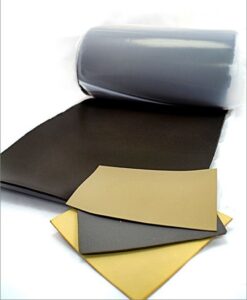Redesigning an EV battery box because of a gasket problem can be difficult and expensive. It’s better to account for EV battery box sealing up-front than to design the case and discover that a gasket won’t fit, or that a chosen material wasn’t the best selection. Along with low-temperature flexibility and high-temperature resistance, EV battery box gaskets need to provide shielding against electromagnetic interference (EMI). They also need to meet tough flammability requirements and support sealing without high closure forces.
EV Battery Box Basics
An EV battery box contains cells that store the charge for the inverter, which converts DC power to AC power. The battery box protects the cells from dirt, water, and environmental contaminants. It also protects the vehicle from the cells, which can leak, while helping to remove the heat that the cells generate. Typically, the battery case is made of a lightweight carbon composite material and has built-in ducts for airflow and cooling. Some battery boxes support individual cells and hold them in place.
The body and lid of an EV battery box are produced to tight tolerances; however, there are still tiny gaps where surfaces meet. Gaskets made of compressible elastomers fill these gaps and provide two-way sealing so that environmental contaminants are kept out and potential leaks are kept in. Yet EV battery box gaskets need to have a durometer (hardness) that’s not so high it keeps the case open or so low that the seal will over-compress and separate. Both the battery box and seal also need to be lightweight.
There are other important design considerations as well. Because EV batteries are susceptible to fire, both the battery case and the battery gasket need to be made of flame-resistant materials. EV batteries can also generate EMI and are susceptible to electromagnetic interference that can harm the battery or interfere with onboard systems such as backup cameras, safety sensors, GPS, and satellite radio. As you can see, the right gasket material for an EV battery box needs to meet a range of requirements.
EMI Gasket Materials
Specialty Silicone Products (SSP) makes flame retardant EMI silicones for EV battery box sealing. These compounds are filled with electrically conductive nickel-graphite particles and provide a lower-cost alternative to silver-filled elastomers. Importantly, they provide UL 94 V-0 flame resistance and are available in durometers that support sealing at lower closure forces. With their silicone base, our elastomers resist high temperatures, remain flexible at low temperatures, and provide dependable environmental sealing.
SSP50240-V0 is a 40-durometer, nickel-graphite filled EMI elastomer that conforms to UL-94 V-0 and can be used instead of GORE GS2100, a discontinued material from W.L. Gore & Associates. SSP502-60-V0 is a 60-durometer EMI silicone that’s also filled with nickel-graphite particles and meets UL-94 V0 flammability requirements. It can be used as an offset to GORE G25200, another discontinued material. On the SSP website, you’ll find the following types of information, which include third-party test results.
- Compression Deflection Data
- Product Data Sheet
- GORE Offset Chart
- Offgassing Report
- Shielding Report
- UL 94 V0 Test Data
Most of SSP’s EMI silicones can be extruded and bonded into O-rings that fit a machined groove around the battery box. However, engineers need to know about this option up-front to avoid difficult and expensive redesigns later on. That’s why we’re sharing this article, and why we encourage you to engage us. For more information about SSP’s materials and how they can be used for EV battery box sealing and EMI shielding, contact SSP online or email Dominic Testo, SSP’s Business Development Manager.




